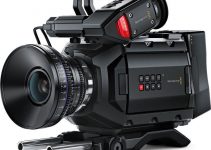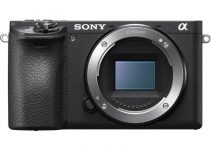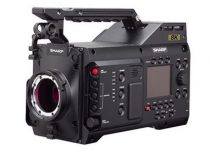There are so many similarities and a lot of differences between the Sony A7S III, the Sony FX6, and the Sony FX9 that if you’re trying to figure out which one would be the best value for your business, you might get a migraine.
Comparing these cameras is like buying an appliance, picking a mattress, or doing your taxes – it is a process that is designed to cause confusion and maximize corporate profits. Features are marketing tools designed to entice a buyer into upgrading to the next price point, even if that upgrade won’t provide any value to your business.
There are great things about all of these cameras, and Sony is doing some fantastic work making tools for professional image capturing applications. But, NO Limit On has a great breakdown to help wake you up and see how Sony is manipulating their users and cannibalizing their own products in the name of capitalism. Let’s have a watch and really figure out which is best for you and your wallet.
Doesn’t it seem as if Sony has really backed themselves into a corner with their camera line up? The features offered in the Sony A7S III seem to outshine their cinema cameras. The cheaper FX6 offers a lot of the same features, and even some improvements over the FX9 even though the FX6 is nearly half the price.
Which one is better? Which one offers the best value to you? It would seem as though they’ve mixed and matched everything up in such a way to cause a lot of confusion, doesn’t it?
Here is a breakdown of how each camera differs from the next (other than in price).
Sony FX6 and Sony A7S III
Don’t let the Full Frame sensor and 10bit video recording fool you. Even though these cameras might seem a lot like one another on paper, they’ve got a lot of differences.
Where the FX6 comes up short
Usability
- With an easy to navigate menu system, the A7S III knocks the FX6’s poor touch screen implementation and IU out of the park.
Focus Tracking
- The FX6 lacks the quick and simple touch to track focus feature in the A7S III, and autofocus doesn’t work on some modes, randomly, on the FX6.
Slow Motion
- Unlike the A7S III, the FX6 can only shoot 120fps without sound.
Stabilization
- The A7S III has gyro stabilization through Catalyst, and IBIS built-in.
- The FX6 can only record the gyro data for post stabilization in Catalyst.
RAW Recording
- Neither camera has RAW built-in, but the A7S III send raw out through HDMI and the FX6 shares a raw feed over SDI which limits the external recorders you can use.
How the FX6 is better than the A7S III
Audio
- The Sony A7S III lacks the XLR audio inputs you’d find on the FX6.
Exposure Control
- The FX6 contains a built-in variable ND system, and the A7S III has no ND system.
Ins & Outs
- SDI, Timecode I/O, and HDMI are all featured and easily accessible on the the FX6 and not available on the A7S III.
Low Light
- Though technically about the same as a A7S III, the low light on the FX6 is better thanks to greater internal noise reduction.
Sony FX9 and Sony FX6
With a price difference of $11,000 vs $6,000 did Sony kill the FX9 with the FX6 before anyone even started using it?
Sensor
- The FX9 uses a 6K sensor, which downsamples to 4K, and is capable of cropping to S35 for use with a wider assortment of lenses.
Dual Base ISO
- FX9 has a dual base ISO of 800, and 4000
- FX6 has a High/Low ‘base sensitivity’ setting of 800, and 12,800
Raw Recording
- The FX9 requires a big, expensive external unit to record in raw and can’t output a raw signal to an Atomos.
Slow Motion
- FX9 is limited to 60fps in 4K, can not shoot in 120fps in 4K like the A7S III and FX6.
- FX9 can only shoot 180fps in super slow motion, but the FX6 and A7S III can film in 240fps.
Media
- FX6 uses dual card slots compatible with both durable, highly efficient CFexpress Type A or widely available SDXC cards, compared to the FX9’s proprietary XQD cards and a single SD card option.
The Best of Three
Determining which of these cameras is the best for you is a little like buying a mattress. They’ve all got the same springs inside, but colors, pattern, fabric, and prices are all impossible to compare so most people end up with one that costs 6x more than the same one they could have bought at Costco.
If you want a camera that offers a lot of bang for your buck and can deal with the workarounds, the A7S III is a solid bet. However, if you want a camera that is more ergonomic, offers better performance in low-light, can easily be stripped down to fly on a gimbal, offers a solid range of codecs, the FX6 is perfect for you.
To be completely honest, unless the FX9 meets your specs for delivering certain projects, or you require the ability to switch from Full Frame to S35 crop without losing any quality, it isn’t worth the additional expense or effort to carry that big camera around.
In a perfect world, the FX6 would have all the features of the A7S III and more, and the FX9 would have everything from the two on top of its own added tricks but that simply isn’t the way product marketing works.
Sony would want you to buy all 3 rather than making the one that just making this decision easy for you.
My advice on buying a camera is simple, rent it before you buy it. The new features in the A7S III might look fantastic, but you might be able to get away without buying either the FX9, FX6, or A7S III is you’re happy with the previous model.
[source: No Limit ON]
Order Links:
- Sony Alpha a7S III Mirrorless Camera (B&H, Amazon)
- Sony PXW-FX9 XDCAM 6K Full-Frame Camera System (B&H, Amazon)
- Sony FX6 Full-Frame Cinema Camera (Body Only) (B&H)
Disclaimer: As an Amazon Associate partner and participant in B&H and Adorama Affiliate programmes, we earn a small comission from each purchase made through the affiliate links listed above at no additional cost to you.
Claim your copy of DAVINCI RESOLVE - SIMPLIFIED COURSE with 50% off! Get Instant Access!





